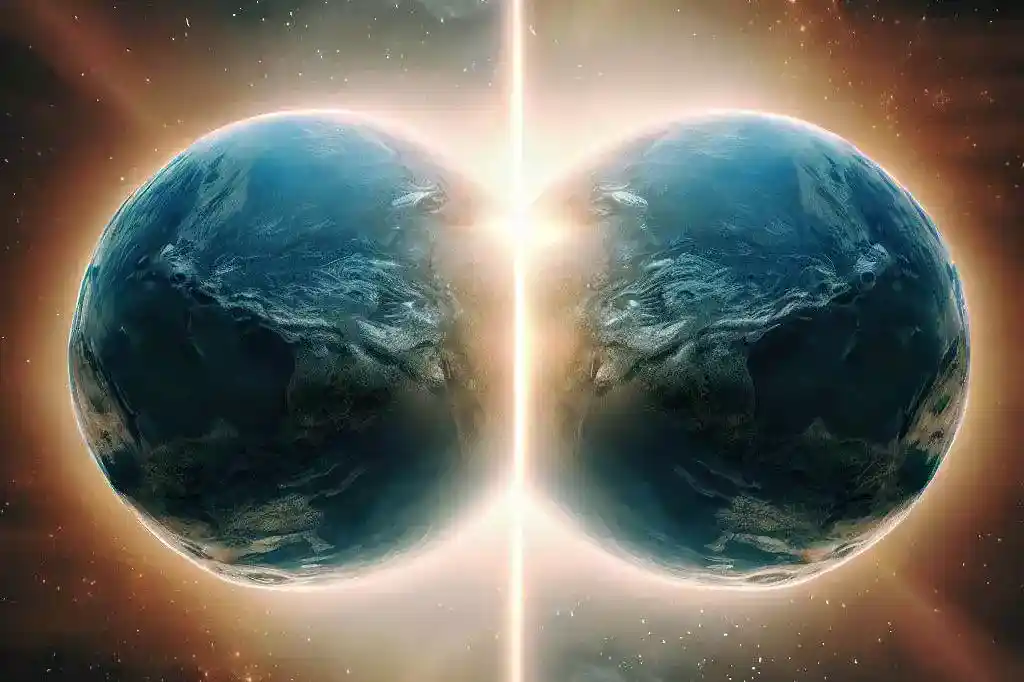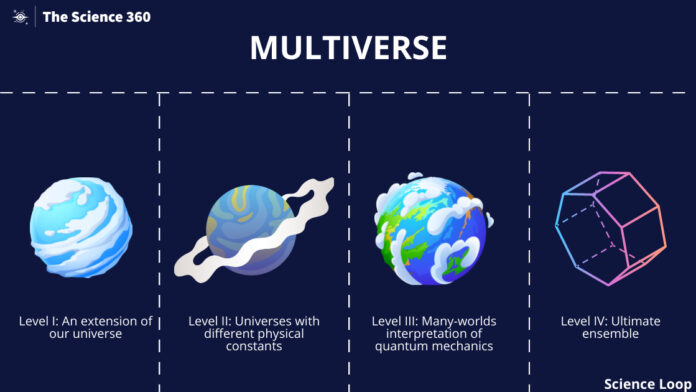Introduction
In the fascinating field of theoretical physics, the concept of a multiverse has gained considerable attention and intrigue. A multiverse refers to the hypothetical existence of multiple universes, each with its own set of physical laws, constants, and even dimensions. Renowned physicist Brian Greene has contributed significantly to our understanding of the multiverse with his classification of nine types and his exploration of the twin-world models. In this article, we will delve into the four main types of multiverses, as outlined by Brian Greene, and explore the implications they have for our understanding of the cosmos.
Four Types of Multiverses
Type I Multiverse: Bubble Universes
The first type of multiverse, known as the Type I multiverse, is based on the concept of bubble universes. According to this model, our universe is just one of many bubbles floating in an infinite cosmic foam. Each bubble represents a separate universe with its own distinct properties. These bubbles are constantly forming and expanding, creating an endless array of universes with diverse physical characteristics. This theory suggests that the inflationary period of the early universe gave rise to the formation of these bubble universes.
Type II Multiverse: Membrane Universes
Moving on to the Type II multiverse, we encounter the concept of membrane universes, also known as brane worlds. This theory postulates the existence of higher-dimensional structures called branes, on which our universe is situated. According to this model, our three-dimensional universe is like a slice of bread within a higher-dimensional space. Other branes may exist alongside ours, each representing a separate universe with its own set of physical laws and properties. These branes can sometimes interact, leading to interesting phenomena and potential clues about the nature of the multiverse.
Type III Multiverse: Many-Worlds Interpretation
The Type III multiverse is closely tied to the field of quantum mechanics and the concept of the many-worlds interpretation. According to this theory, every time a quantum event occurs, the universe splits into multiple branches, each representing a different outcome. For example, if a particle can exist in multiple states simultaneously, the many-worlds interpretation suggests that each possible state is realized in a separate universe. In this multiverse, every conceivable outcome of quantum events becomes a reality in a different universe, leading to an unfathomable number of parallel worlds.
Type IV Multiverse: Ultimate Ensemble
Finally, we come to the Type IV multiverse, known as the ultimate ensemble. This concept encompasses the idea that every mathematical structure, including all possible universes with different physical laws and dimensions, exists in a vast ensemble. These mathematical structures represent different possible universes that could exist within the multiverse. According to this model, our universe is just one realization among countless others, and the laws of physics we observe are a result of a random draw from this ultimate ensemble.
Brian Greene’s Nine Types of Multiverse
Brian Greene, a renowned theoretical physicist and string theorist, has proposed nine types of multiverses in his work. Here’s a brief overview of each:
- Quilted Multiverse: This type suggests that the universe is infinite. Due to the finite number of possible particle configurations within the cosmic horizon, the same particle arrangements are repeated over infinite space, creating parallel universes.
- Inflationary Multiverse: This theory is based on the concept of eternal inflation, where different regions of space stop inflating at different times. This results in “bubble universes” that may have different laws of physics.
- Brane Multiverse: In string theory, our universe exists on a three-dimensional “brane” within a higher-dimensional space. Other branes may exist as parallel universes.
- Cyclic Multiverse: This model proposes a cyclical process of Big Bangs and Big Crunches, creating a series of universes over time.
- Landscape Multiverse: In string theory, there are many possible versions of space-time, each with its own laws of physics. These different universes make up the “landscape”.
- Quantum Multiverse: Quantum mechanics suggests that all possible outcomes of a quantum event exist in separate universes. This is also known as the “Many-Worlds Interpretation”.
- Holographic Multiverse: This theory suggests that the entire universe can be seen as a two-dimensional information structure “painted” on the cosmological horizon.
- Simulated Multiverse: This proposes that the universe is a simulation or a complex computer program, and there could be other simulated universes.
- Ultimate Multiverse: This type encompasses all possible mathematical structures, which Greene suggests may define all possible universes.
Each of these multiverses presents a different perspective on the nature of reality and our universe, pushing the boundaries of our understanding of the cosmos.

Twin-World Models
These models propose the existence of parallel universes that share the same space and time as our own but remain invisible and inaccessible due to their unique physical properties. Twin-world models offer an intriguing perspective on the multiverse, suggesting that alternate realities may exist right alongside our own, hidden from our senses.
Frequently Asked Questions (FAQs)
Q1: What is a multiverse?
A1: A multiverse refers to the hypothetical existence of multiple universes, each with its own set of physical laws and properties.
Q2: Who is Brian Greene?
A2: Brian Greene is a renowned physicist and author known for his work in theoretical physics, particularly in the field of string theory and the multiverse.
Q3: How many types of multiverses are there according to Brian Greene?
A3: Brian Greene has classified nine types of multiverses, each with its own unique characteristics and implications.
Q4: What is the significance of twin-world models?
A4: Twin-world models propose the existence of parallel universes that coexist with our own but remain undetectable due to their distinct physical properties.
Q5: How do bubble universes form?
A5: According to the Type I multiverse theory, bubble universes are constantly forming and expanding within an infinite cosmic foam, resulting from the inflationary period of the early universe.
Q6: How does the many-worlds interpretation relate to the multiverse?
A6: The many-worlds interpretation suggests that every possible outcome of a quantum event becomes a reality in a different universe, leading to a vast number of parallel worlds within the multiverse.
Conclusion
The concept of the multiverse, as elucidated by Brian Greene’s classification and exploration, has captivated the imagination of scientists and the general public alike. The four main types of multiverses, from bubble universes to the ultimate ensemble, offer intriguing possibilities for the nature of our reality. Twin-world models add another layer of fascination, suggesting parallel universes that exist alongside our own. As we continue to probe the mysteries of the cosmos, the study of the multiverse provides a rich field for further exploration and a deeper understanding of our place in the universe.


